The Long Island Rail Road, celebrating its 170th anniversary in 2004, crosses Flushing Avenue in style at 56th Street in Maspeth
The first thing to remember about Flushing Avenue is that it doesn’t go to Flushing; in fact, it doesn’t approach within five miles of it.
Flushing Avenue takes its unusual name because of the relative isolation of Flushing, Queens. In the colonial era, marshy land and creeks cut Flushing off from traffic from the west, and as there were few good roads into Flushing, carts and coaches had to first go to Jamaica and travel north from there.

Flushing Avenue, in the past, was a toll road built to be an alternative to the southern approach. It would eventually lead to Newtown (a large area, known today as Elmhurst and northern Maspeth) and then to Flushing via North Hempstead Turnpike (what is now approximately 63rd Road) and then along either now-vanished roads (Strong’s Causeway, obliterated in the 1950s by the Long Island Expressway) or all-but-vanished roads (Head of the Vly Road, now a short lane called Vleigh Place) into Flushing.
The westernmost section is the oldest, dating to the colonial era and earlier; it ran east from the now-filled Wallabout Mill Pond in what is now the Navy Yard east to Bushwick Avenue. (At its western end, Flushing Avenue becomes Nassau Street; further east, a short street just south of Flushing Avenue and Kent Avenue is called Little Nassau Street.) By about 1805, tolls were being charged and the road was known as the Brooklyn and Newtown Turnpike. (A long wooden pole, or pike, was placed across the road; this pike was turned, or moved out of the way, when the toll was collected.) The B&N was extended to Broadway in 1850, and to Bushwick Avenue in 1858. Beyond Bushwick Avenue the road ran in a sinuous, circuitous fashion to avoid hills. In 1868, the hills were leveled, the road was straightened and, by 1893, the road had its present form and length it has today, extending out to the junction at Grand Street (later Avenue) and Maspeth Avenue. (To muddy the water even further, an even older road extended southwest from what would be the Brooklyn and Newtown Turnpike at what would be Broadway in the colonial era, joining a highway known as Cripplebush Road, which ran approximately in a north-south route where Bedford Avenue is today.)
Flushing Avenue, therefore, is in the tradition of streets and roads named not for where they are or where they go, but rather for what their destination was meant to be. Amboy Road in Staten Island went to a vanished ferry to Perth Amboy, New Jersey; White Plains Road in the Bronx goes to a network of roads that, if you go the right way, will get you to White Plains; formerly, Queens had a whole group of Hempstead and North Hempstead Turnpikes (of which Hempstead Avenue is the only vestige, connecting to Nassau and Suffolk’s lengthy Hempstead Turnpike). Queens has blurred its conection to the rest of Long Island by renaming its old roads, but Flushing Avenue survives as a historic throwback.
You’d think that a road with a pedigree like Flushing Avenue’s would be the El Camino Real of Brooklyn and Queens. Instead, to paraphrase a twangin’ Duane Eddy classic song title, it’s five miles of bad road.
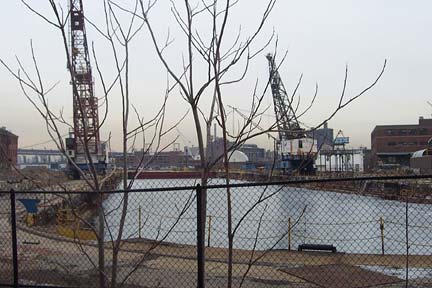
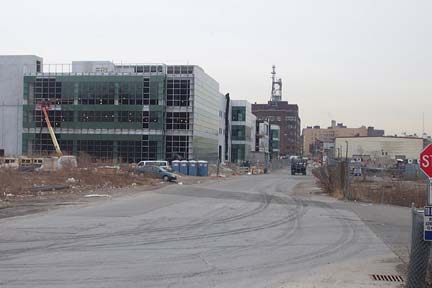
It’s not easy to get photos of the Brooklyn Navy Yard; it’s still protected by miles of barbed wire, guards, dogs, Janet Napolitano, you name it. After a 150-year history of building some of America’s premier fighting vessels from the Monitor, Arizona and Missouri on down, the Navy Yard was decommissioned in 1966 and is presently the home of 200 private businesses; its six dry docks, one of which is shown above, are still in operation. Tugboats are repaired and maintained, and ships are still built here, along with furniture design, electronics and jewelry making along with over 200 other businesses; there’s also a NYC tow pound and a water pollution control plant. The Navy Yard is thriving in its new role.
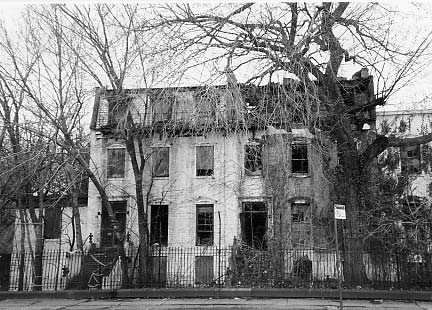
Sadly, apart from the 1807 Commandant’s House, possibly designed by Charles Bulfinch, on the far western end of the complex, most of the Navy Yard’s old officer’s quarters, some dating from the mid-to-late 19th Century, have been allowed to rot. They look out over Flushing Avenue between Navy Street and Carlton Avenue, their windows ivied and hollow.
They are supposed to be demolished to make way for a supermarket, but as of 2012, that has been talked about for 10 years.
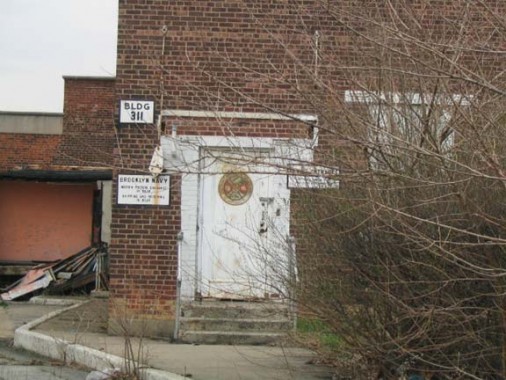
At the eastern end of the Navy Yardon Flushing Avenue near Williamsburgh Place you’ll find the Brooklyn Navy Motion Picture Exchange.
Forgotten fan Mike Olshan mentions that the BNMPE was a depot from which movie prints and projectors were shipped out for entertainment and instruction onboard ships and at naval bases.
Steiner Studios has opened a 275,000 square foot complex comprising five sound stages; movie making has returned to the Navy Yard.
Route 66 may wind from Chicago to LA; Flushing Avenue meanders from the Navy Yard to Maspeth. It follows a generally straight line east to west till it gets to Broadway, and then begins a slight but definite trend to the northeast, which gets more pronounced until it flows into Grand Avenue.
Many streets in New York are so lengthy that residents on one section of such a street may not know that their street extends so far away. When you are in St. Albans, Cambria Heights, or Elmont and you encounter Linden Boulevard, it’s the same street that starts out as a trickle in Flatbush near Erasmus Hall. Fifth Avenue above Marcus Garvey Park is a shadow of what it is in its guise as The Queen of Avenues along and below Central Park. Broadway, meanwhile, keeps a seemingly self-important air as it marches from Bowling Green all the way to Riverdale and beyond.
Flushing Avenue, though, has a gritty, working class personality and keeps it along the majority of its five-mile length. This is the land of warehouses, factories, auto collision repair joints, junkyard dogs and tractor trailers short-cutting their way to the Brooklyn-Queens Expressway.
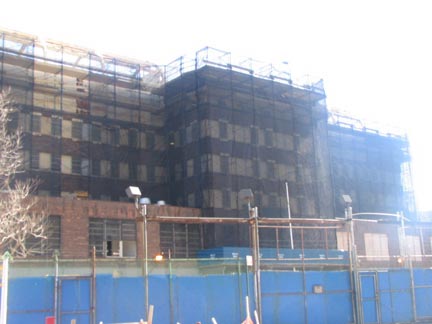
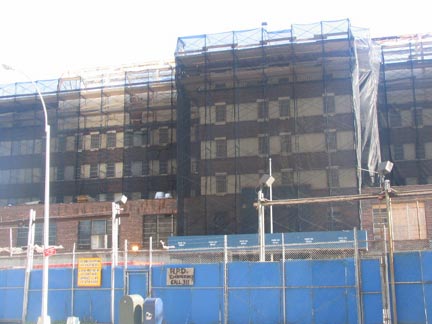
Isolated from the rest of Fort Greene by the BQE (a block to the south along Brooklyn’s Park Avenue) Flushing Avenue has also had its very own jail. It was originally built to house sailors stationed at the Navy Yard; the jailbirds, bars and barbed wire were added later when the sailors left. It was demolished by 2005.

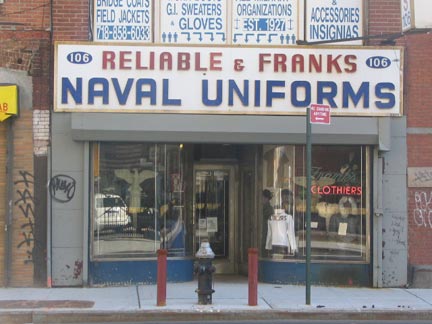

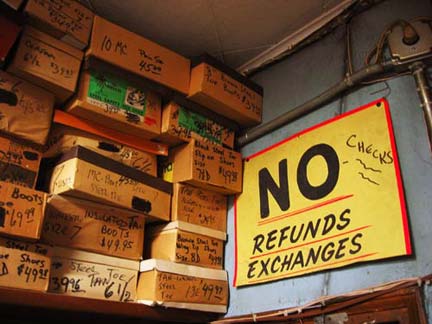
Though there aren’t many sailors at the Navy Yard any more with its decommission in 1966, Reliable & Frank’s Naval Uniforms is still where it’s been since 1927. Photos: Mike Epstein, Alexis Robie
“You don’t get much foot traffic,” said Vincent Faiella, whose grandfather Natale Faiella opened the store in 1927 and whose father, “Battleship” Mike Faiella, ran it before passing it on to Vincent.
Battleship Mike, who is 77 and lives on Ocean Parkway, visits a few days a week. “Business isn’t what it was,” he said laconically, sitting on a folding chair and surrounded on all sides by mounds of royal-blue trousers.
At the height of the Navy’s presence in Brooklyn, during World War II, dozens of surplus stores were located near the yard. Today, only Reliable remains. “We were able to get into different avenues,” said Battleship Mike, noting that in the 60’s and 70’s the Army-Navy look was big with “hippies.”
Later, Reliable sold uniforms to workers on cruise ships, to the crew of Malcolm Forbes’s yacht, to budget-conscious students at Pratt Institute and to the Village People (for the group’s “In the Navy” video, naturally).
Each time a rival closed, Reliable bought it out and appropriated the old stock, along with some facet of the business. Taking over a store named Battleship Max Cohn is how Battleship Mike got his nickname.
That strategy of expansion has resulted in a huge inventory: work shirts, wool socks, camouflage coats, patches, pins, a kimono dating to World War II, and what Vincent Faiella suspects is the country’s largest inventory of Seafarer Dungarees, the bell-bottom jeans once worn by sailors. NY Times
That was from 2006, and the business has since closed…
Alexis Robie got some interior photos.
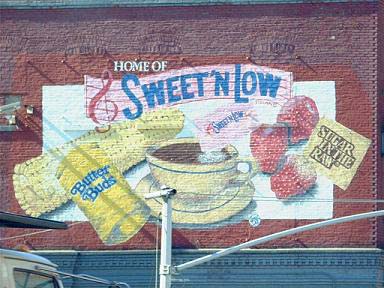
Fort Greene is the home of Sweet ‘N Low. Who knew? Cumberland Packing Corp., headquartered at 2 Cumberland Street (at Flushing) with additional facilities inside the Brooklyn Navy Yard, manufactures Sweet’N Low, Sugar in the Raw, Nu-Salt, and other products.
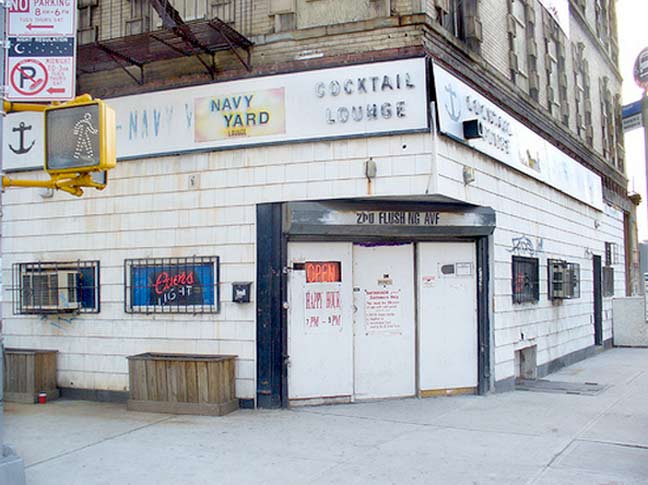

JJ’s Navy Yard Cocktail Lounge, Washington and Flushing Avenues.
Anyway, at first glance inside the Navy Yard, the place seems like your average rundown neighborhood bar. A few regulars are milling about, playing pool. The bartender is cordial. (I’m sort of blending the different trips into one post here….it was always the same.) WBLS is on a little too loudly on the radio. The TV is also on seemingly just as loud — one of those CBS shows that I’ve never watched on Thursday nights. (CSINCS?)
Eventually around 10 p.m., a lot more women are suddenly in the bar… they walk in, talk with the bartender, spend a lot of time in the women’s room. Soon, there are anywhere from five to 10 women va-va-va-vooming around in lingerie, bikinis, etc. Oh! They’re all very outgoing, especially when there are just two of you in the bar.
Every few minutes Delicious or Cinnamon or Diamond walks up and asks again if you’d like a dance. No thanks! Two minutes later… There’s not much of a chance of sitting here for, say, a few hours drinking without purchasing a $10 dance. (And they don’t have change for a $20, oddly enough.) So just sit there in your stool at the bar for the lapdance and wonder why Laurence Fishburne decided to do CSINCS.
There’s steady drinking. No one is smashed. It’s not amateur hour. There’s a no-nonsense, studied drinking going on. I always expect it to get fratastic, though that never happens these nights. E.V. Grieve
JJ’s, along with its local color, vanished when the building was bought in 2010. The whole place has been renovated and apparently Dunkin’ Donuts moved in.
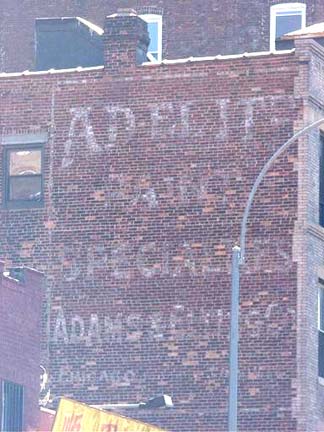
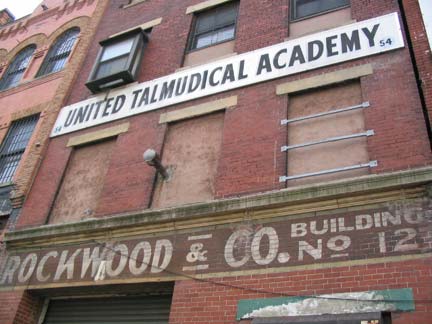
Sweet Adelite. Not surprisingly, Googling® Adelite Paint Specialties reveals nothing. We do know from the wall dog ad that it had offices in Chicago. These signs were shot on Washington Avenue just off Flushing Avenue, where, eons ago, your webmaster tried to learn to drive. They still talk about it at the academy. Photos: Christina Wilkinson.
Working our way east we find at Williamsburg Place, where the Brooklyn-Queens Expressway crosses, a wild boar and the graffiti-coated warehouse of W.B.A.Jurgens. Presuming no relation to Curt Jurgens, the German-born actor who bounced back from his experience at a concentration camp in Nazi Germany to appear in over 100 films, including as Roger Moore’s evil mastermind opponent in The Spy Who Loved Me. Or maybe there is a relation. Photos: Christina Wilkinson.
Forgotten fan Karen Wagner has researched Jurgens:
“[Jurgens] first shows up on the 1880 census living on Boerum St. with his wife Christina. He was born in Hanover, Germany in 1838/1839, came to the US in 1864 and was a ‘wholesale grocer’. By 1900 he owned the house at 924 Bushwick Ave. and looks like he died sometime before 1920. In 1892, according to the NY Times, a fire destroyed Wm B.A. Jurgens Grocery house at the corner of Flushing and Ryerson St. It says it was built in 1887.”

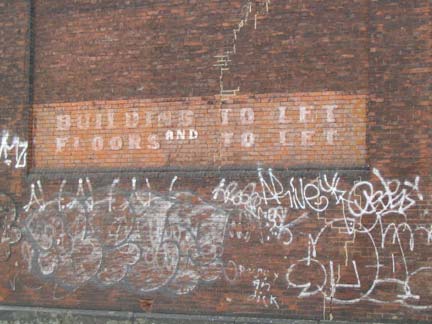
Showing their age. These signs along Flushing Avenue are showing their decades-old pedigree: the old alphanumeric phone number (they sometimes referred to the neighborhood they were located in, but not always).
Not too many listings are given as “to let” anymore; the usage comes not from let, “to allow” but let as a form of the word “lease.” Photos: Christina Wilkinson
Welcome to the Malcom. A massive warehouse on Franklin Avenue and Flushing, it has gone through a number of names, some of which can be seen in painted ads on the Franklin Avenue side. Photos: Christina Wilkinson.

Pfizer, Inc., now a global multimillion dollar drug company, was opened by Charles Pfizer in 1849 in this building at Flushing Avenue, with its first product being santonin, a drug originally used to expel roundworms from the system. It moved its main headquarters to Maiden Lane downtown in 1868; it has frequently moved around since and has branches worldwide. Its production of citric acid in 1880 became its main business for decades; Pfizer pioneered the production of penicilin in 1941. It would become the world’s #1 maker of the new wonder drug during World War II. Photo: Christina Wilkinson.
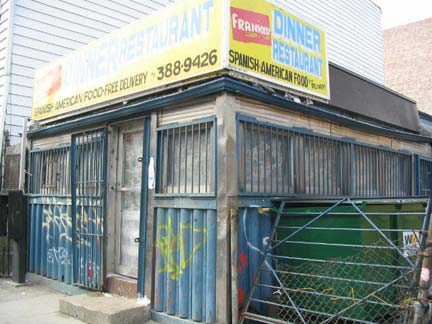
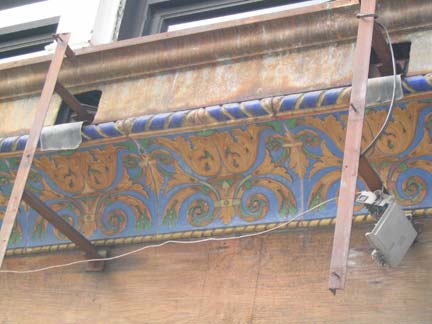
Toward Broadway, a busy shopping street and the location of Woodhull Hospital, business picks up just a bit along Flushing Avenue. We thought this tiny diner was long-abandoned, but a patron…we think… appeared just after the photo was taken. At right, some painted detail on a nearby building. Photos: Christina Wilkinson
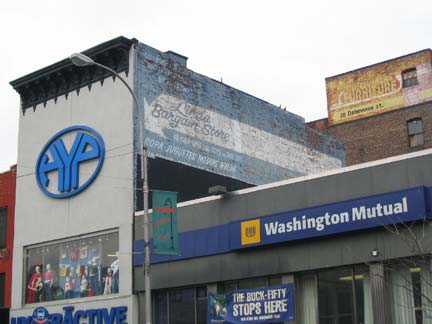

Brooklyn’s Broadway preserves many of its ancient signs for present-day urban explorers. At left, Linda and her bargain store have left, as have Consumers Furniture. We’d have to guess that Kelsey’s was a department store, though on All In The Family, which was set in nearby Ridgewood, Archie Bunker buys a bar called Kelcy’s. Could there be any connection? Photo left: Christina Wilkinson
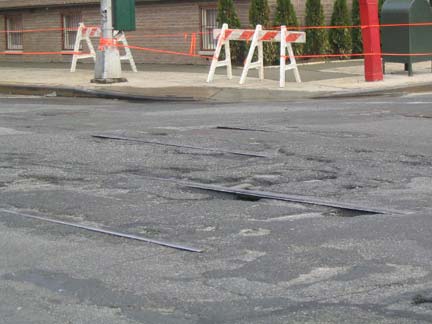
In 2004 Flushing Avenue was in desperate need of new pavement. As a result, its trolley legacy was clearly visible in several spots.
Horsecars began operation on western Flushing Avenue in the 1850s and by the 1860s, service had been extended east to Broadway and to Knickerbocker Avenue by the late 1880s. By 1889, tracks had been built as far as the old Bushwick LIRR tracks (more on them later); by 1896 tracks were laid as far as the junction with Grand Street.
After 1893 most of the horsecar lines were electrified, but the line along Flushing Avenue could not run at first because the LIRR refused to allow Brooklyn Rapid Transit cars to cross its tracks at grade. After the BRT adopted a manually-operated block signal system at the grade crossings, the line was allowed to proceed. More conventional crossing gates appeared in 1899.
The trolley era lasted till November 1948, when buses replaced the trolley cars.
![]() Early Rapid Transit in Brooklyn and Queens by Mark Feinman
Early Rapid Transit in Brooklyn and Queens by Mark Feinman
At Bushwick and Flushing Aves. we find not one but two Fletcher’s Castoria ads superimposed on top of each other. The ads were originally painted by ‘wall dogs’ between 1890 and about 1915. Fletcher’s ads were on thousands of buildings around the country in the early years of the 20th Century.
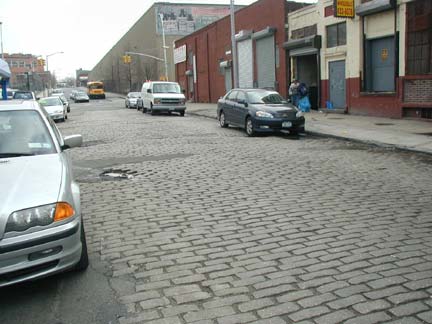
Belgian-blocked Evergreen Avenue between Flushing Ave. and White Street. Both Bushwick and Evergreen Avenues follow the old route of Old Bushwick Road, a colonial route. As a result, Evergreen Avenue is not quite straight in comparison with other avenues in Ridgewood.
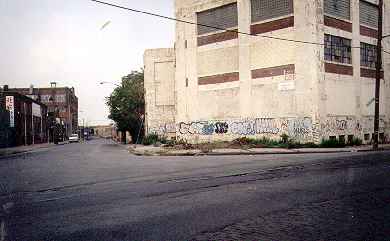
The Long Island Rail Road’s former so-called Evergreen Branch diverges from the Bushwick Branch (which we’ll see later) at about Varick Avenue and crossed Flushing Avenue at Stewart Avenue. This “dent” in the building on the corner marks the former right of way. Amazingly this line did see passenger service between Greenpoint and East New York…but only until 1894.
![]() lirrhistory.com on the Evergreen Branch
lirrhistory.com on the Evergreen Branch
![]() Art Huneke “Arrt’s Arrchives” Evergreen Branch page
Art Huneke “Arrt’s Arrchives” Evergreen Branch page
Oh you beautiful dolls. Eegee, as well as other doll manufacturers, had factories in Ridgwood near the Queens line. These can be found along Johnson Avenue just west of Flushing Avenue

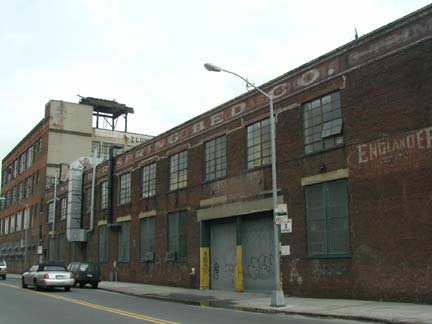
Englander Mattresses shared factory space with Eegee, but not at the same time. Their names are emblazoned on top of each other on this Johnson Avenue building.
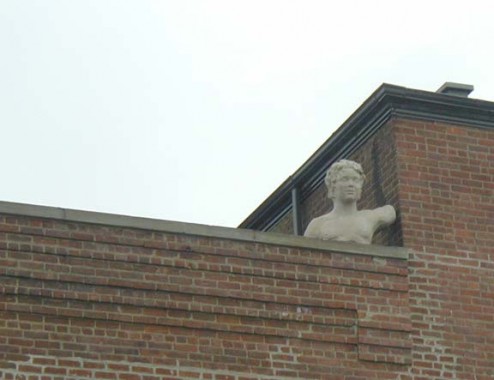
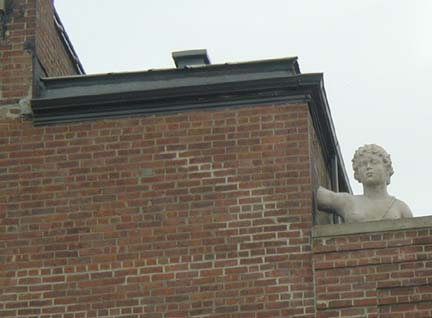
Well, hello there.
We got “busted” along Johnson Avenue.
Has anyone done a capital “B” quite like Bohack Supermarkets? Really. Speaking as an aficionado of calligraphy, type fonts and the printed word, I know their B has panache. It has verve. It has a je ne sais quoi. It’s the sh!t. It rocks. Even on this painted building ad at Metropolitan Avenue and Flushing Avenue (which used to be known as Bohack Square) the Bohack logo is recognizable…mainly because of that “B”.
These B’s are on former cafeteria at Flushing Avenue and Troutman street, near a Bohack plant whose smokestack stillstands.


Over the past 20 years community gardens have been planted in otherwise drab areas. This one, near Morgan Avenue, is still a work in progress.
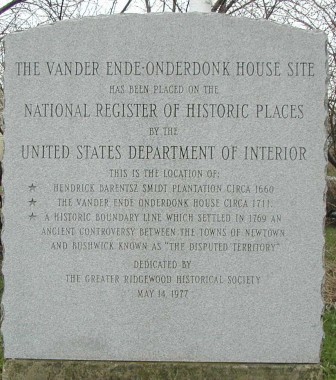

The Van Der Ende-Onderdonk House, also known as the Van Nanda-Onderdonk House, the last in a group of colonial-era Dutch houses in the Ridgewood-Maspeth area, was built around 1710. It was most likely built by a farmer, Paulus Van Der Ende of Flatbush; his son or grandson, Frederick Van Nanda, owned it in the late 1700s and early 1800s. It was sold to Adrian Onderdonck in 1831 and the Onderdon(c)ks and their family lived in the house until the late 1880s. Of course, the adjacent street, Onderdonk Avenue, is named for the family.
The house is just over the Queens side of the borough line. In the back yard of the Onderdonk House you will find the famed “Arbitration Rock” that, according to some accounts, denoted a disputed Brooklyn-Queens boundary. It was located to the west of Flushing Avenue and Onderdonk Avenue until Onderdonk was extended west in the 1930s. Arbitration Rock was buried beneath the pavement for decades, until a chance excavation in December 1999 revealed it once more. Surveyor Peter Marschalk set the boundary, originally the Kings County-Newtown Township line, in 1769.
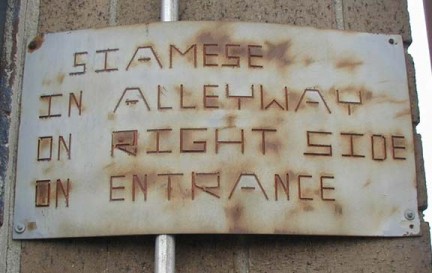
Crossing into Queens…
We never did find out if there was a Siamese in the alleyway. The sign, of course, refers to a two-headed sidewalk standpipe.
This is actually a novel idea for an alphabet. Few diagonal lines and no curves, and I’ve never seen an “A” like that, anywhere.
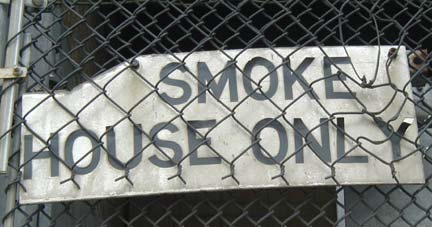
Smoking? Indoors? Does Bloomberg know about this?
Runaway train! In March 2004, a train crew forgot to set all the brakes on an LIRR diesel loco and it started up, roaring down the tracks on the LIRR Bushwick Branch, seen above as it crosses Flushing Avenue, at about 15-20MPH, mowing down several vehicles and severely injuring four. The train was halted when it struck a truck on Varick Avenue.
The Bushwick Branch was originally a part of the now-defunct South Side Railroad of Long Island. It actually ran passenger service in its early years, the 1860s; the closest station at this point was where Flushing Avenue and 53rd Street now are, called Hebbards after a local farmer.
Just after passing the Bushwick Branch, Flushing Avenue tunnels under what is now known as the LIRR Montauk Branch (it reaches Montauk, the last stop way out east), again, it was formerly a part of the old South Side Railroad. This part of the line sees mostly freight, but it does have three passenger runs per day to and from Long Island City (most LIC runs now go through Hunters Point and link up with the main branch in Sunnyside Yards).
Here Flushing Avenue is at its quintessentially inhospitable best; a broken street light used to illminate a debris-strewn staicase that leads down to a Stygian walkway paralleling Flushing Ave. as it runs under the railroad. The cross street is, appropriately, Rust Street.
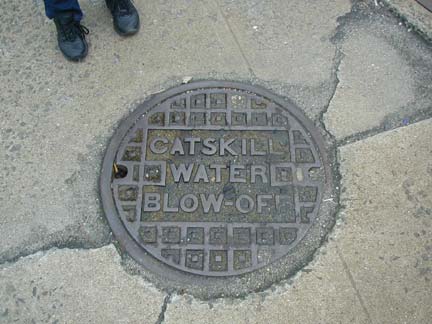
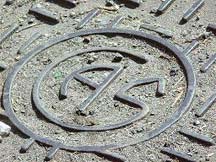
We are near the end of our Flushing Ave. odyssey, so let’s look at some items that facilitate actual flushing, like distinctive manhole and conduit covers. The “gas” cover was likely produced by the A.S. Pitz Foundry.
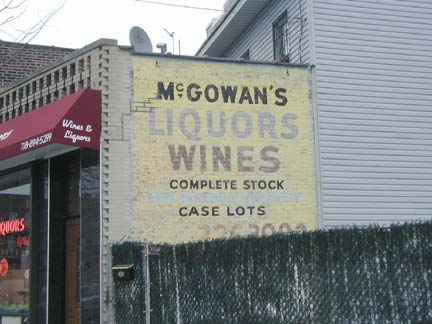
The liquor store is still there but it’s not McGowan’s.
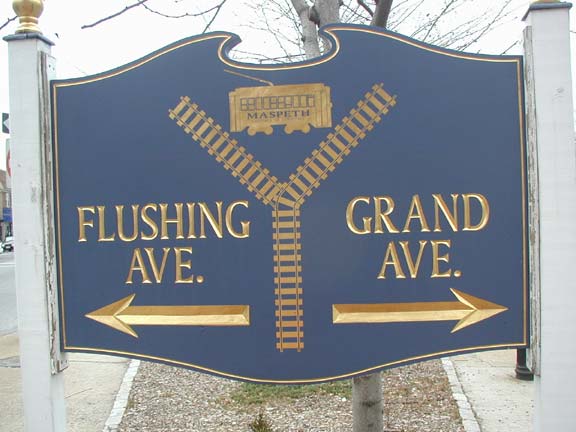
This sign stood at the eastern end of Flushing Avenue at 64th Street where it meets Grand Avenue. It was trashed during a 2010 street reconstruction, but was salvaged by Christina Wilkinson, President of the Newtown Historical Society, who helped out on this page.
Your webmaster compiled information and walked Flushing Avenue with Christina April 4th, 2004 and completed this webpage April 22, 2004.

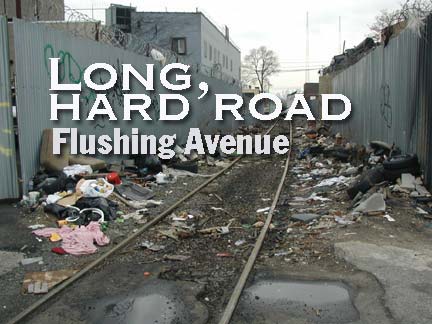
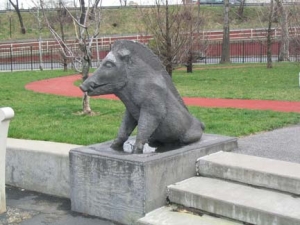
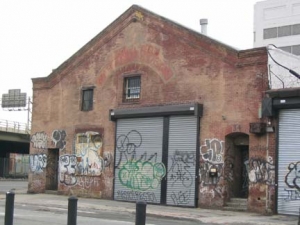


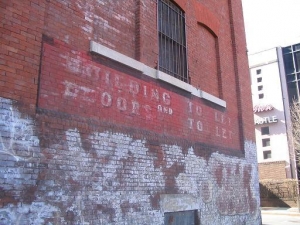
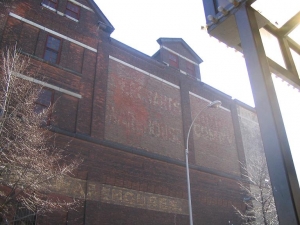
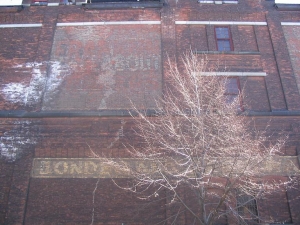


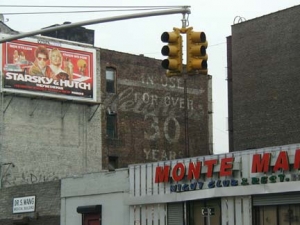
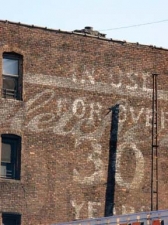
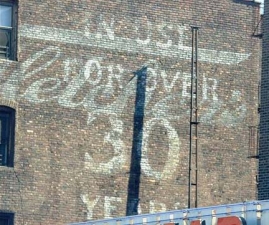
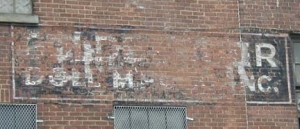


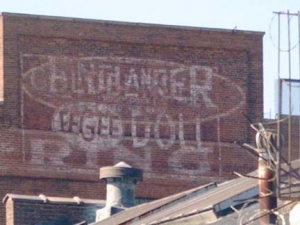
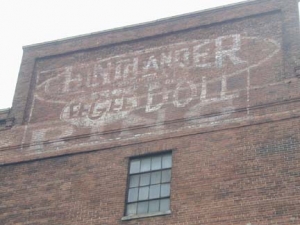
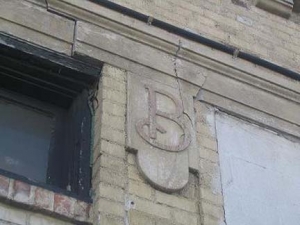


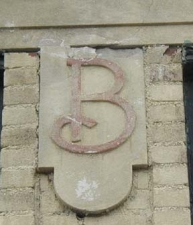
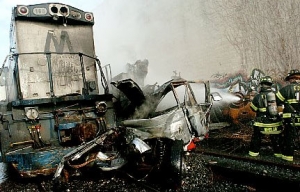
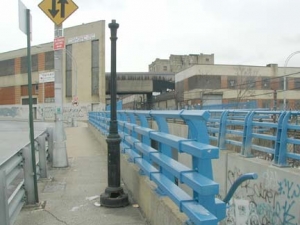

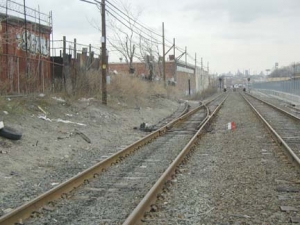
14 comments
Amazing. Some of these buiding signs, I grew up looking at. Like the one on Graham Avenue, with the furniture store behind it on Debevoise Street. Also, the ‘Floor to Let’… in 1984, when I was 13 and riding the B48 bus to school every morning, I wondered what that meant. I grew up in Williamsburgh, Bushwick, Onderdonk, Cypress, Evergreen, Grand Street, Flushing Avenue, Graham Avenue, Humboldt Street. Was always amazed by the streets and train tracks and buildings. I always knew there was something wonderful about my old neighborhood. Thank you so much…
[…] Flushing Avenue – Kevin Walsh […]
I grew up in this area and am still here for the time. I really like the research you and others like the guy at NP has done. The photography in particular and the history of the places. Thank you.
It’s odd to me how little attention this side of NYC gets.
And I agree with the previous poster- there has always been something about this neighborhood.
Take care.
well aint’ notin’ tu- say much.allot of my relatives came tu- this country. I doubt If or maybe afew abide still here an; thahr’. we spoke the Brooklyn dialicht’ since my grandfather came from thare’ since 1909 his cousins an’ brother an’ sistah’went to all the bourows of nu-yawk’ciety’!!!!! yeah once yu- learn it yu- nevah’ fi’gaht’ et’!!! rahte’!!!!
hey mickey mouse was born ina’ Brooklyn navy yard, right.
great article on flushing ave. I was wondering, what is the old factory at Flushing/Rust street and 57th in Queens?
WOW! I was born and raised here, in this same exact neighboorhood and it made me sorta of proud to see what my neighboorhood once was. As a history buff, I was astonished to see and find out so many unknown facts about this side of Brooklyn… Growing up in this part of the neighboorhood, all you would see along flushing was railroad tracks on the streets and SOOOO many warehouses and factories. Its pretty cool to finally get some info as to what once stood there (Especially the ads painted alongside the buildings on Graham and the railroad tracks that are still visible til this day.) AWESOMEEEE! 🙂
True………..
My great-great-great-great- grandmother, Abigail Somerindyke Gatfield, lived on Flushing Avenue until 1842 (her obituary names Flushing Avenue as her place of residence). She was the daughter of Richard Somerinkdyke, who owned a large farm in Bloomingdale, which is now part of the the Upper West Side of Manhattan. Her husband was Benjamin Gatfield. Her daughters, Phoebe Gatfield McClaughry (my ancestor) and Matilda Gatfield Acker, are also documented as having lived in Brooklyn. Notably, Matilda is mentioned in the will of Ann Titus of Flushing Avenue. Ann Titus was a sister of Elizabeth Onderdonk. The will is dated 26 June 1926. If anyone has any info on the Gatfield family in Brooklyn, or about Flushing Avenue in the first half of the 19th century, I’m very interested.
I enjoyed this doing ancestory research i found that my grandmother livd at 502 Flushing ave when she as a little girl around the 1860S looks like it as torn down and industrial now
For someone who used to be stationed (with the Navy) at the old Brooklyn Navy Yard, was cool to read some of this!
I just saw an Antiques Roadshow clip on a label from a can of W.B.A. Jurgens peaches that was used by a World War I soldier to thank the company for their peaches.
Searching Google on his name turns up this article AND a Google Books hit that dates the death of Mr. Jurgens to April 11th 1916.
does anyone remember that until maybe the early 1960’s there was a farm on or near Flushing and St Nicholas Avenues. near the Ellers Coffee Company.
Can’t anyone tell me anything about a drugstore on flushing avenue owned by Robert Raleigh, c. 1916?